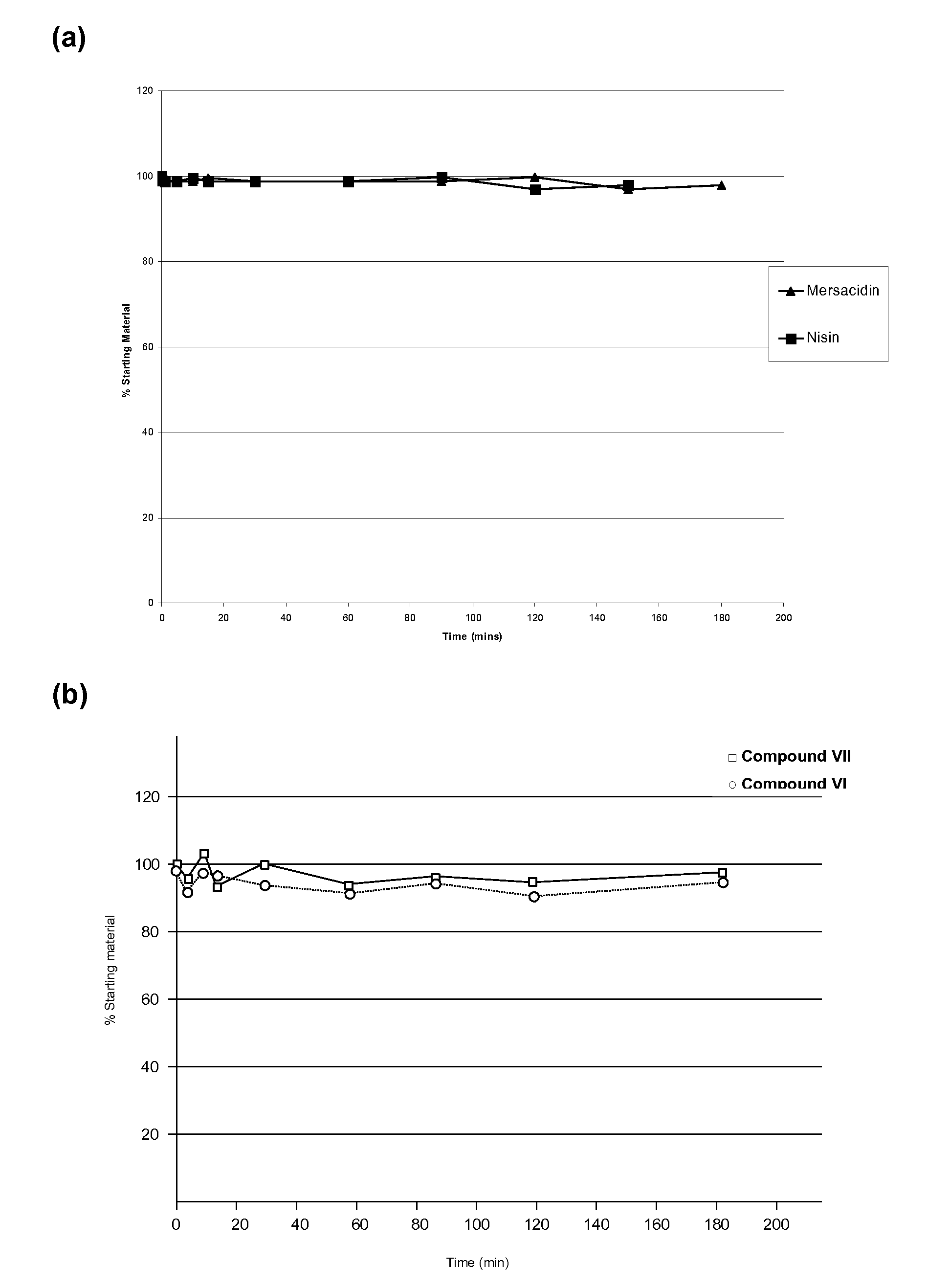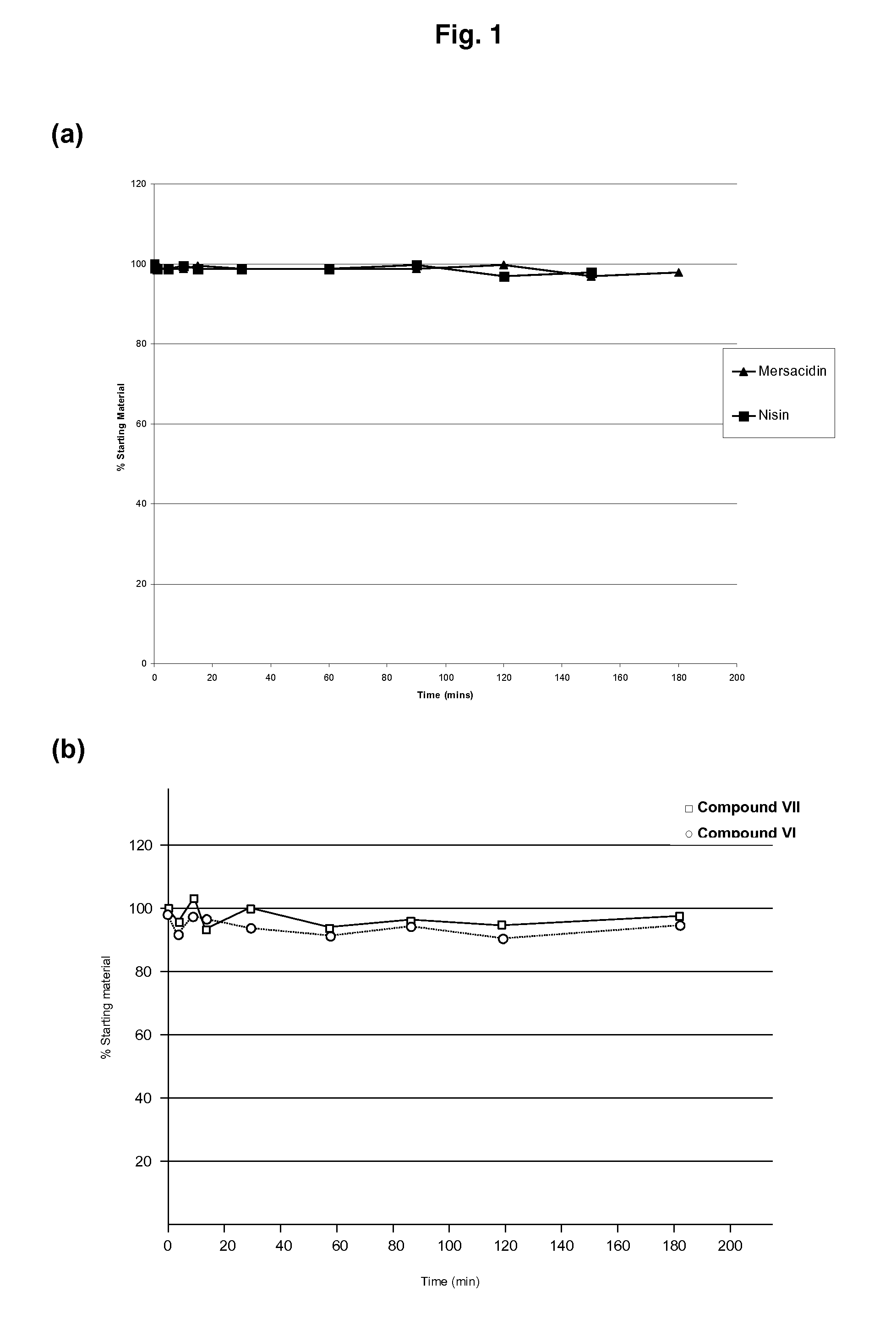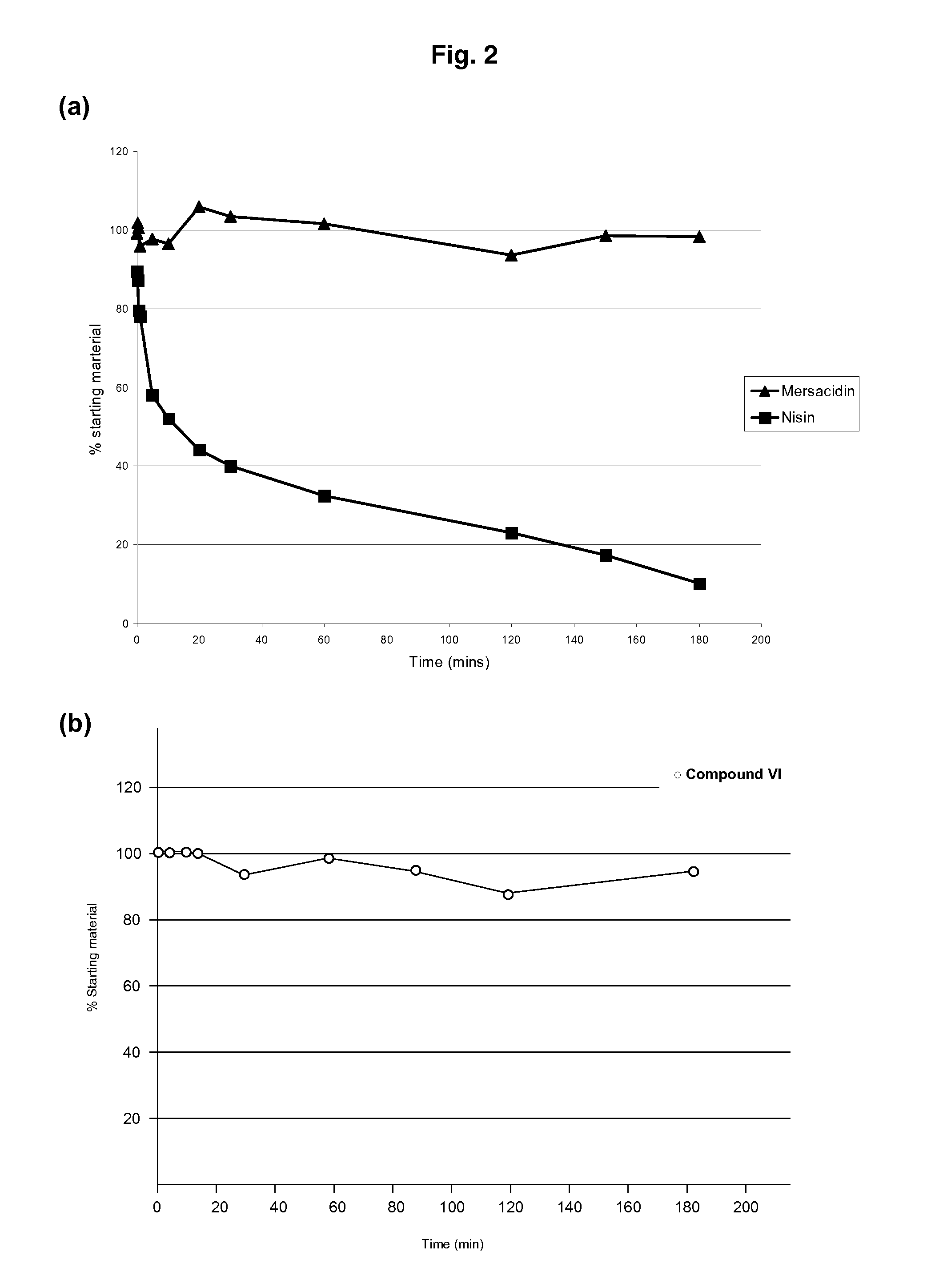Use of Type-B Lantibiotic-Based Compounds having Antimicrobial Activity
a type-b, antimicrobial technology, applied in the direction of antibacterial agents, peptide/protein ingredients, drug compositions, etc., can solve the problems of inability to in vivo experimental data, inability to directly deliver nisin to the infection site, intrinsic vulnerability of nisin to enzymatic cleavage, etc., to achieve simple and effective formulation, flexibility of formulation
- Summary
- Abstract
- Description
- Claims
- Application Information
AI Technical Summary
Benefits of technology
Problems solved by technology
Method used
Image
Examples
example variant
[0314]Suitably the type-B lantibiotic is a mersacidin variant compound selected from the group below:
Compound IV: F3W Mersacidin
Derivatives
[0315]Compounds for use in the present invention include derivatives of compounds of formula (II).
[0316]Derivatives of compounds for use in the invention (including variants) are those in which one or more amino acid side chain of the compound of the invention has been modified, for example by esterification, amidation or oxidation.
[0317]A derivative may include a compound in which the carboxy function of a side chain of an internal residue is modified as explained in relation to compounds of formula (I) above. For example, residue Glu17 in mersacidin may be modified from —COOH to a group —COOR9 in which R9 represents hydrogen, (C1-C4)alkyl or (C1-C4)alkoxy (C2-C4)alkyl. Alternatively, the carboxy function of a side chain of an internal residue e.g. that of the residue Glu17, is modified from —COOH to a group CONR1R2 that is the same as X.
[0318]C...
example 1
Activity of Type B Lantibiotics Against C. difficile
[0541]Compounds I to VII were screened against twelve clinical isolates of Clostridium difficile. The tests were performed in Wilkins-Chalgren Anaerobe Agar under anaerobic conditions, and the MIC (minimum inhibitory concentration—defined as the lowest concentration of substance that completely inhibits visible growth of bacteria) was determined for each compound.
[0542]As shown in Table 4, all the Clostridium difficile strains were inhibited by compounds I to VII at concentrations of 4 g / ml or less. Table 2 also lists the MIC values for vancomycin. Compounds I to VII have similar in vitro potency to vancomycin. The data show that the general sensitivity of Clostridium difficile make this bacterium a viable target organism for therapy using type-B lantibiotics.
TABLE 4Activity of type-B lantibiotics against C. difficileMinimal Inhibitory Concentration (MIC) in μg / mlC. difficile StrainIIIIIIIVVVIVIIVanc.Metro.37779244211220.125191262...
example 2
Activity of Type-B Lantibiotics Against Other Gut Organisms
[0544]The activities of several type-B lantibiotic derivatives (Compounds II, IV and VI) against a number of species commonly occurring as part of the gut flora were measured and compared with vancomycin (Table 5). The compounds were found to have low potency against Bifidobacterium spp and Bacteroides spp and it can therefore fairly be assumed that they would have no significant effect on the gut flora at therapeutic doses levels, unlike vancomycin.
TABLE 5Activity of type-B lantibiotics against organismscommon in the intestinal flora.Minimal Inhibitory Concentration (MIC)μg / mlOrganismIIIIVVIVancomycinE. coli DC2>64>64>64>64(membrane more susceptible)E. coli>64>64>64>64ATCC 25922E. faecium (VSE)6432160.5ATCC 19579E. faecalis (VSE)83244ATCC 29212E. faecium (VRE)>643264>64(clinical isolate)E. faecalis (VRE)4164>64(clinical isolate)Bifidobacterium adolescentis1632321NCTC 11814Bifidobacterium longum1616321-2NCTC 11818Bacteroides...
PUM
| Property | Measurement | Unit |
|---|---|---|
| Volume | aaaaa | aaaaa |
| Molar density | aaaaa | aaaaa |
| Fraction | aaaaa | aaaaa |
Abstract
Description
Claims
Application Information
 Login to View More
Login to View More - R&D
- Intellectual Property
- Life Sciences
- Materials
- Tech Scout
- Unparalleled Data Quality
- Higher Quality Content
- 60% Fewer Hallucinations
Browse by: Latest US Patents, China's latest patents, Technical Efficacy Thesaurus, Application Domain, Technology Topic, Popular Technical Reports.
© 2025 PatSnap. All rights reserved.Legal|Privacy policy|Modern Slavery Act Transparency Statement|Sitemap|About US| Contact US: help@patsnap.com



